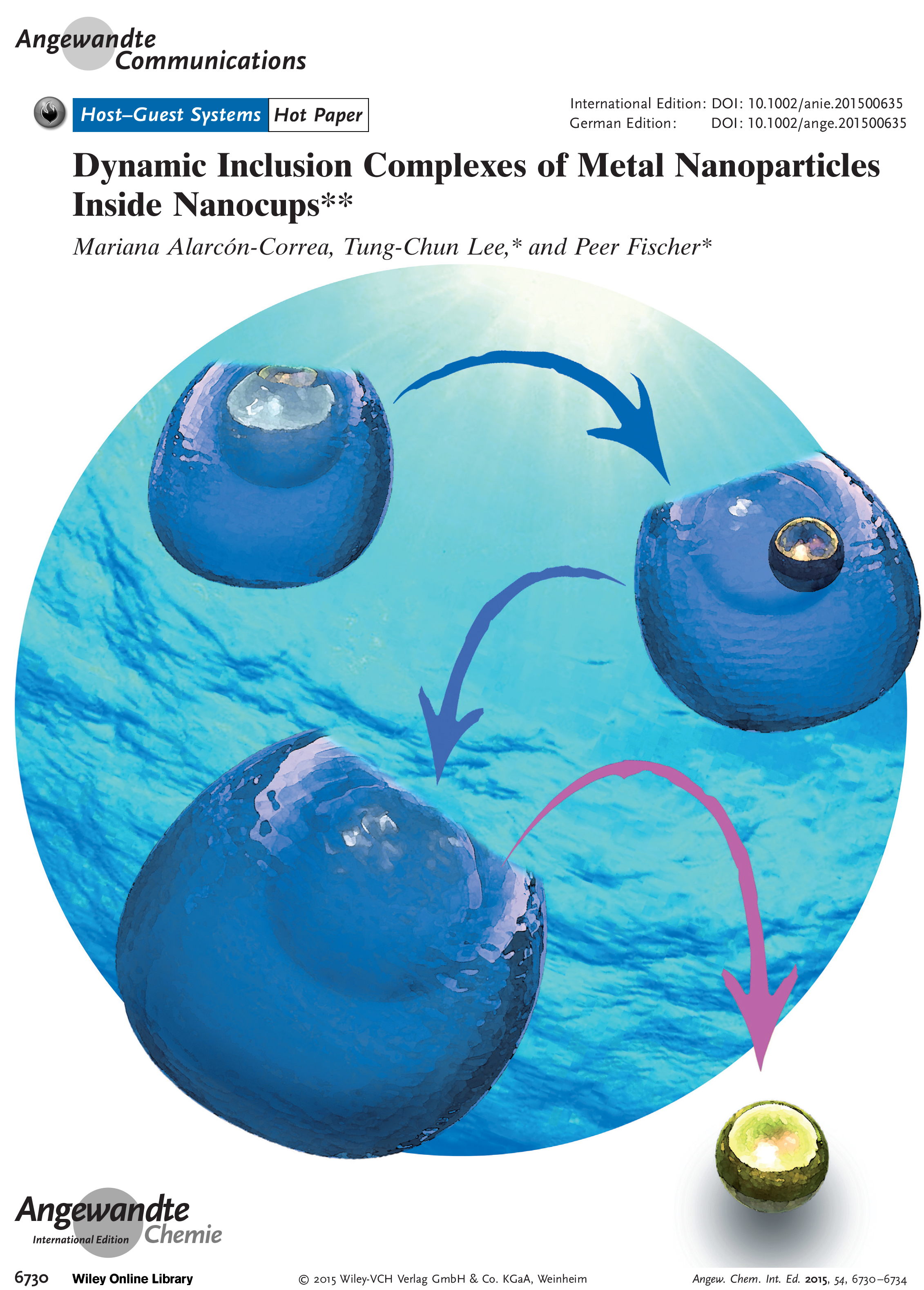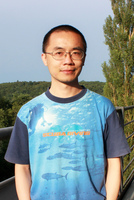Dynamic Inclusion Complexes of Metal Nanoparticles Inside Nanocups

Host-guest inclusion complexes are abundant in molecular systems and of fundamental importance in living organisms. Realizing a colloidal analogue of a molecular dynamic inclusion complex is challenging because inorganic nanoparticles (NPs) with a well-defined cavity and portal are difficult to synthesize in high yield and with good structural fidelity. Herein, a generic strategy towards the fabrication of dynamic 1: 1 inclusion complexes of metal nanoparticles inside oxide nanocups with high yield (> 70%) and regiospecificity (> 90%) by means of a reactive double Janus nanoparticle intermediate is reported. Experimental evidence confirms that the inclusion complexes are formed by a kinetically controlled mechanism involving a delicate interplay between bipolar galvanic corrosion and alloying-dealloying oxidation. Release of the NP guest from the nanocups can be efficiently triggered by an external stimulus. Featured cover article.
| Author(s): | Alarcon-Correa, Mariana and Lee, T. C. and Fischer, Peer |
| Journal: | Angew. Chem. Int. Ed. |
| Volume: | 54 |
| Number (issue): | 23 |
| Pages: | 6730-6734 |
| Year: | 2015 |
| Month: | May |
| Bibtex Type: | Article (article) |
| DOI: | 10.1002/anie.201500635 |
| State: | Published |
| Electronic Archiving: | grant_archive |
| Note: | Featured cover article. |
BibTex
@article{2015alarcon,
title = {Dynamic Inclusion Complexes of Metal Nanoparticles Inside Nanocups},
journal = {Angew. Chem. Int. Ed.},
abstract = {Host-guest inclusion complexes are abundant in molecular systems and of fundamental importance in living organisms. Realizing a colloidal analogue of a molecular dynamic inclusion complex is challenging because inorganic nanoparticles (NPs) with a well-defined cavity and portal are difficult to synthesize in high yield and with good structural fidelity. Herein, a generic strategy towards the fabrication of dynamic 1: 1 inclusion complexes of metal nanoparticles inside oxide nanocups with high yield (> 70%) and regiospecificity (> 90%) by means of a reactive double Janus nanoparticle intermediate is reported. Experimental evidence confirms that the inclusion complexes are formed by a kinetically controlled mechanism involving a delicate interplay between bipolar galvanic corrosion and alloying-dealloying oxidation. Release of the NP guest from the nanocups can be efficiently triggered by an external stimulus. Featured cover article.},
volume = {54},
number = {23},
pages = {6730-6734},
month = may,
year = {2015},
note = {Featured cover article.},
slug = {isi-000355314100003},
author = {Alarcon-Correa, Mariana and Lee, T. C. and Fischer, Peer},
month_numeric = {5}
}


